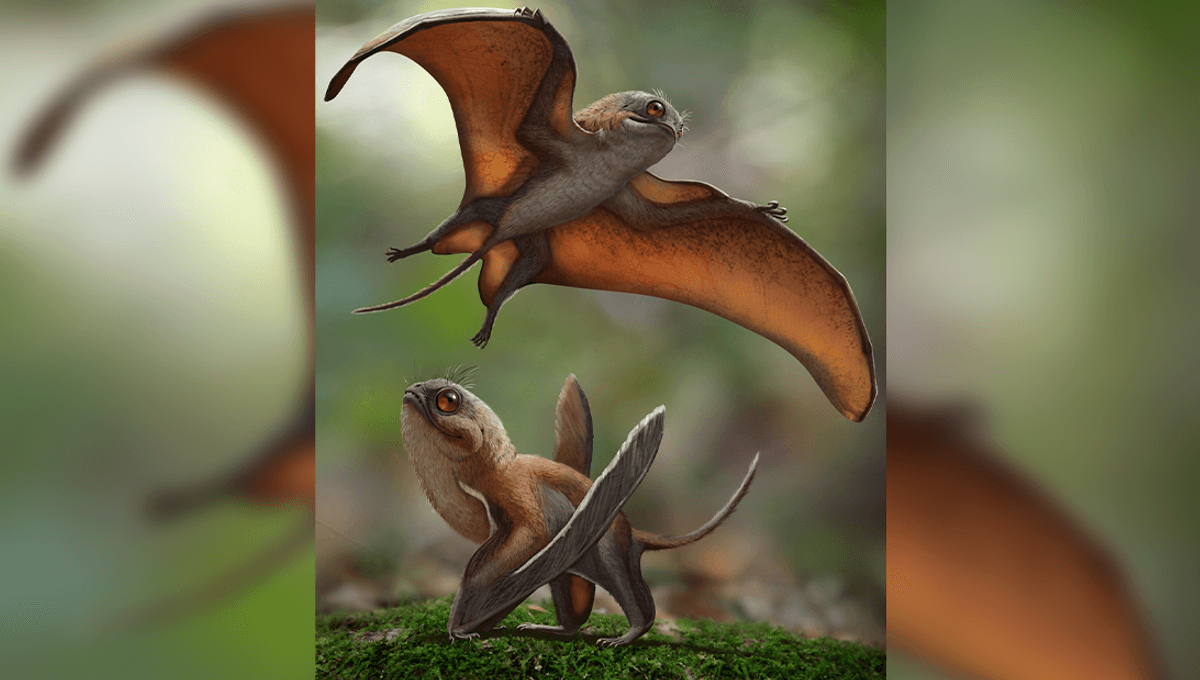
While there might be a pretty incredible array of creatures living on planet Earth at the moment, let’s take a second to wind back the clock and have a closer look at perhaps one of the most appealing clades that existed back in the Jurassic and Cretaceous periods of Earth’s history. Meet the Anurognathidae.
Pterosaurs were the first animals with a backbone to achieve true powered flight, but are typically thought of as large creatures that tormented the skies. Anurognathidae is the name of a clade of very small pterosaurs with bat-like wings. In total, it is thought that the group contains six species, known from 12 specimens. Fossils of these creatures include some with the wing membranes preserved. These creatures were tiny flying reptiles that likely ate insects and possessed wide skulls, with short faces, small peg-like teeth, and big eyes.
Specimens of anurognathids are quite rare, but one of the most notable of these species is Anurognathus ammoni. This was the first species of the family described in 1923, and another specimen was described in 2007. It lived during the Late Jurassic roughly 149 million years ago. Its body is estimated to have been only 9 centimeters (3.5 inches) long, but with a wingspan of 35 centimeters (14 inches). It would have been one of the smallest pterosaurs ever to have lived, thought to have weighed just 40 grams (0.09 pounds).
As well as the wingspan and smaller body, A. ammoni also possessed huge eyes and a short skull, plus a short tail. The lifestyle of this unusual creature was thought to have been similar to a bat or an insectivorous bird like a swallow or nightjar.
A fossil of Jeholopterus ningchengensis was described in 2009, with a preserved wing membrane that reached the ankle. It was also covered in furry hairs known as pycnofibres, which are thought to have deadened the sound of the wings beating as they hunted insects through the air. It has even been suggested that the pycnofibres could have become feather-like structures, suggesting that they evolved much earlier or evolved independently in this group.
A new fossil was described in 2021, which is considered a new genus of anurognathid from China. Unfortunately, the specimen has been rather crushed – however, the researchers think it belongs in the Anurognathidae and was given the name Sinomacrops bondei. “The generic name is a combination of Sino, macro and ops; which are Ancient Greek for China, large, and eyes/face, respectively. This is in reference to both the large eyes and the broad faces that are typical of anurognathids, and to the Chinese origin of the new species,” write the authors.
Given there are still so few specimens, there remains a high level of discussion about where these species would have fit in taxonomically within the evolution of the Anurognathidae and with the wider pterosaurs.
Source Link: Meet The Anurognathidae: Tiny Bat-Like Ptersosaurs With Huge Eyes